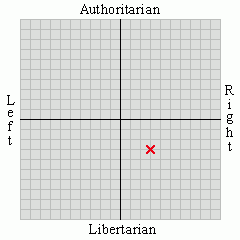One of the most risible suggestions from the pro-CAGW crowd is the assertion that changes in the weather, or rises in atmospheric CO2 are responsible for Earthquakes. In précis their explanation goes; More CO2 in Atmosphere - Atmosphere heats up - ice melts - more volcanoes and Earthquakes (You're alll doooooommed! - give us your money). Even under the scantiest of scrutiny this postulation falls down and bangs its head on a rock. Let me explain a few reasons why.
First; 'rebound' Quakes need to lose a lot of ice before they happen. Ice is a comparatively light material (919kg per Cubic metre) as opposed to water (Pure 1000kg per cubic metre). They also take a long time post de-glaciation to happen. In addition, unlike quakes in subduction and active fault zones they tend to be lower intensity. Also, ice loss is not thought to affect plate tectonics. Not that we're going to have a problem with less terrestrial ice if the current nascent (Early days at present) cooling trend continues for another few decades. Likewise the catastrophic claims of sea level rise don't (Ahem) hold water.
At the moment we are, despite claims of 'The hottest decade - ever' in the beginning of a cooling phase of the Earth's climate. The 'warmest decade ever' is a false claim. Historically it has been warmer - this is proven by clues scattered throughout historical records of the Medieval and Roman Warm periods, and that's just within recorded history. The extended Northern range of various settlements / cultivated crops like vineyards up near the Scottish border, and Medieval Norse settlements in Greenland. Other clues can be found within overlooked / ignored Chinese records still which range back up to 5000 years. No citations as my Mandarin extends to 'Good Morning' and 'Happy new year'. I'm as dependent on translations as the next Westerner. Mind you, Medieval Chinese records can be just as incomprehensible to the average Modern Chinese as Medieval Church Latin to the average current English speaker.
Piers makes the claim that the Earth is in the first stages of a cooling phase which will cover thirty years, and then stay cooler for around a century or so. He bases his claims on his understanding of the Lunar and Solar cycles. "Don't be silly!" The pro CAGW crowd scoff. "How can the Moon or the Sun affect the weather? What utter rot!" They tend to dismiss his work out of hand. To them he's a crazy old crank with untidy 'mad scientist' hair. How wrong they are. Which I will try, in my idiosyncratic laymans fashion, to explain.
Meteorology is a minor study of mine. Having been an outdoorsman most of my life, I like to know when to head for cover or leave the heavy raincoat at home. I've also worked with pilots, who have to make an in depth study of the weather, as their (and their passengers) safe passage depends upon their understanding of the weather. My understanding covers things like what a cold or occluded front is, and what it means. Why high pressure in certain areas means get out the sun tan lotion, and in others, put another log on the fire. Katabatic and Anabatic winds, all that sort of stuff. As for the Moon not affecting the Earth's weather? Erm, what about the Tides? Tidal changes are mostly lunar influenced and with variations due to various tricks of geography, circle the planet twice a day. Although the Sun is also well known to affect tides.
Now what many people don't seem to appreciate is that the figures given for the Earth / Moon's system orbit around the sun, which is a known variable star, fluctuate within a given range. Now here's a little thought experiment for you, a small demonstration of how heat diminishes rapidly as you move away from its source. Put your hand near a heat source, say an incandescent light bulb or fire. Move your hand away and notice how rapidly the sensed radiant heat diminishes. This is not a straight line relationship. Nature may abhor a vacuum, but it's not that keen on straight lines, either.
In a near vaccuum, such as our solar system, this radiant heat is, within an area often referred to as the 'Cinderella zone', sufficient to support life as we know it. This zone or orbital path is not all that wide, in astronomical terms. When you take into consideration the fact that the Moon does not only orbit the Earth, it influences the Earth's solar orbit. The laws of motion tell us it could not be any other way with two masses circling each other. The Earth does not follow a true smooth elliptical curve around the Sun, it wavers or oscillates in a pattern that can be plotted mathematically, a sort of elliptical shallow sine wave. Take into account the slight variability of the Sun's heat energy, and we can work out how much energy will be falling onto the Earth at any given time. With a little knowledge of Meteorology, any net variations can be plotted for to predict possible major events due to a greater of lesser amount of energy within the parameters of Earth's 'Cinderella zone'. Although compensations such as the known current weakening of the Earth's Magnetosphere will also need to be plotted.
Furthermore, a weakening of the Earth's Magnetospere, or magnetic shield may also allow more energy in, it also allows a greater influence of cosmic rays on cloud formation. Read up on the work of Henrik Svensmark, whose research has a known correlation with the well established cloud formation effect of 'cosmic rays' first observed by Wilson in the early 1900's. More cloud formation and cloud cover increase Earth's albedo, which reflects the sun's light away from the Earth, thus reducing the energy received at ground level. Doesn't have to be much, a tenth of a percentage point can affect weather / climatic patterns.
This is why any net effect of CO2 induced temperature variation will be lost. Whilst CO2, and more importantly methane and water vapour, form an insulating blanket as part of Earth's atmosphere. Major Climate variations also appear more influenced by orbital and until recently relatively overlooked Solar / Earth electromagnetic interaction. Which is another factor we don't understand the full climatic ramifications of.
Piers Corbyn so often gets his forecasts right because he understands the cycles of our planet as it wobbles and precesses around the solar system, and their net effect within the thin skin of Earth's biosphere.
Furthermore, the suggestions that there are positive climatic related feedbacks which mean a hundred or so parts per million of CO2 will turn the Earth's climate into a raging volcanic soup like Venus. These are demonstrably so far fetched they veer into serious tinfoil hat territory along with 'Chemtrails', crop circles, the Flat Earth society, 'born again' creationists and UFO's. There are few observable positive feedbacks in nature. Energy follows the laws of thermodynamics. The 'It's all CO2' assertions tapdance merrily all over established observable principles. The CO2 led models consistently fail to predict warming or cooling. Therefore I'm led to the conclusion that said postulation is too two dimensional an answer to a far more complex question.
In light of the above, I respectfully submit that the CO2 based hypothesis of Climatic variation is deader than a doornail that's just had the last rites following a surgical autopsy. I further submit that taxing 'Carbon' emissions is about as pointless as rearranging deckchairs on a sinking ship. For the sakes of the future economic well being of the world, we should stop. Now. Unless of course you're happy to see your great grandchildren growing up in a new self imposed medieval period. Although that might depend upon whether you see them as one of the Serfs or not.
* Please note that there are no references within this entry to either side of the 'Climate war' of words waged in Desmogblog, Wattsupwiththat, Realclimate or any affiliated web site. They were considered too partisan for the purposes of this blog. Wikipedia sources have likewise only been linked to if they were on non-partisan topics not directly related to climate, and therefore held as suspect.
Storm Red
10 months ago











7 comments:
Cindarella zone? Goldilocks surely, in that here conditions are just right. I'd suggest Cindarella zone is probably more appropriate for where warble gloamists are coming from, in that it's mostly about balls.
'Cinderella'. The browser spellcheck thought it was wrong when I typed it but I thought it was just having one of it's little problems with proper names. Turned out that I was. /facepalm
Er, I'm currently in the final stages of a Novel length MSS, where calculating the 'Cinderella' or 'Goldilocks' zone is key to the story. Which term you use seems to vary between Astrophysicists, but either is good.
Now you've got me. What's an MSS?
Back to the point, I take your word for it that the terms are used synonymously but as a layman while I get Goldilocks and the association with everything being just right I can't make the connection with the Cinderella story. Is it the isolation aspect of it? Or the unfavourable conditions that ultimately become very favourable? I'm just curious about what the thinking behind the term is.
Of course, come back in two or three billion years and neither Goldilocks or Cinderella will be appropriate.
(BTW, had an error posting this comment just now and I'm not sure if it went through or not. Sorry if this is a duplicate.)
AE,
'MSS' is writers shorthand for 'Manuscript', which is what a book or screenplay is referred to before publication.
'Cinderella', 'Goldilocks', or 'habitable' zones around any given star shift as the star uses up its supply of Hydrogen and its output alters. The term is just shorthand for an orbital range around a given star in which life might exist / develop providing a number of other factors are met. How deep / narrow it might be depends on the star such an orbit exists around.
You with me on this one?
I was always with the concept of a star's habitable zone and what it was, and I understood instantly when I first heard it referred to as the Goldilocks zone years ago (might even have been in school). As I said, the idea of the zone being not too hot and not too cold but just right is clearly applicable and is such a repeating line in Goldilocks that it'd be the tagline if they ever made it into a movie. I'm just struggling slightly to relate the story of Cinderella and its themes to the same thing:
"Habitable Zone, you shall go to the ball!" ... nah. Habitable Zone has two ugly sister zones which make her do all the work around the solar system... nah. Habitable Zone's fairy godmother turns the local group into a coach and horses... nah.
I used to feel that the Cinderella story was most applicable to photography since you knew that one day your prints would come, but digital has stuffed up that joke forever.
Sorry. I'll get me coat.
'Goldilocks', 'Cinderella' it's all the same. Pard, if you're going for yer puns on this one, you might have to Bear (Ouch!) up to the fact that it doesn't matter what we call it. It's a hypothetical region around a star that might support life, given all the other factors are in place (The right size of Lunar Mass for tides, no gas giants with big radiation fields anywhere close for example).
'Some day my Prints will come' is also an old drawing office joke. Before the coming of CAD.
Your coats on the rack.
Post a Comment